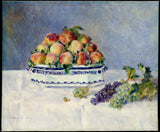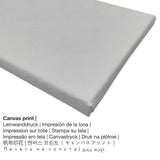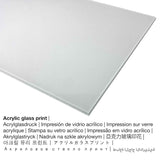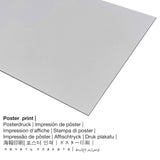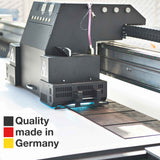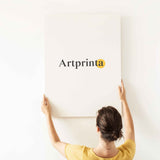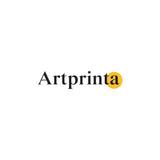Auguste Renoir, 1881 - Bado Maisha na Peaches na Zabibu - chapa nzuri ya sanaa
Kodi ni pamoja. Usafirishaji umehesabiwa katika Checkout.
ufafanuzi wa bidhaa
The sanaa ya kisasa mchoro uliundwa na bwana Auguste Renoir katika mwaka 1881. The over 130 umri wa mwaka awali hupima ukubwa: 21 1/4 x 25 5/8 in (sentimita 54 x 65,1) na ilitolewa na mbinu oil on canvas. Furthermore, this piece of art forms part of the Makumbusho ya Metropolitan ya Sanaa digital collection, which is one of the world's largest and finest art museums, which includes more than two million works of art spanning five thousand years of world culture, from prehistory to the present and from every part of the globe.. With courtesy of - The Metropolitan Museum of Art, New York, The Mr. and Mrs. Henry Ittleson Jr. Purchase Fund, 1956 (public domain license). The creditline of the artpiece is: The Mr. and Bi. Henry Ittleson Jr. Purchase Fund, 1956. Further, the alignment is landscape with a side ratio of 1.2: 1, ambayo ina maana kwamba urefu ni 20% zaidi ya upana.
Chagua nyenzo zako
In the dropdown menu next to the product you can pick the material and sizeaccording to your preferences. Therefore, we allow you to choose among the following options:
- Bango lililochapishwa (nyenzo za turubai): The poster is a printed canvas paper with a nice finish on the surface, which resembles the actual version of the artwork. Please keep in mind, that depending on the size of the poster we add a white margin of approximately 2-6cm around the print motif to facilitate the framing with a custom frame.
- Turubai: The UV printed canvas applied on a wooden frame. A canvas generates the special effect of three dimensionality. Hanging your canvas print: The great advantage of canvas prints is that they are relatively low in weight, which means that it is easy to hang the Canvas print without additional wall-mounts. Canvas prints are suited for any kind of wall.
- Mchapishaji wa dibond ya Alumini: An Aluminium Dibond print is a material with an outstanding effect of depth. A direct Direct Print on Aluminum Dibond is the perfect introduction to art replicas produced with alu. For your Direct Print On Aluminum Dibond, we print the artwork onto the surface of the aluminum. The white and bright parts of the original work of art shimmer with a silky gloss but without glare. The colors are luminous in the highest definition, fine details appear crisp, and you can really perceive the matte appearance of the surface.
- Uchapishaji wa glasi ya Acrylic (na mipako halisi ya glasi): A glossy print on acrylic glass, often named a plexiglass print, will convert your favorite artwork into wonderful décor and forms a good alternative option to dibond and canvas fine art replicas. The work of art is being printed with the help of state-of-the-art UV direct printing technology. This has the effect of vivid and stunning colors. Our plexiglass protects your chosen art print against light and external influences for several decades.
Kanusho la kisheria: We try everythig possible in order to describe our products as clearly as possible and to display them visually in our shop. Although, the colors of the printing material and the printing may vary somehwat from the representation on your device's monitor. Depending on the screen settings and the condition of the surface, colors may not be printed one hundret percent realistically. In view of the fact that the art reproductions are processed and printed manually, there might as well be slight discrepancies in the exact position and the size of the motif.
Kuhusu makala
| Uainishaji wa uchapishaji: | nakala ya sanaa |
| Mbinu ya uzazi: | uzazi wa kidijitali |
| Mbinu ya utengenezaji: | uchapishaji wa dijiti |
| Uzalishaji: | viwandani nchini Ujerumani |
| Aina ya hisa: | juu ya mahitaji |
| Matumizi yaliyokusudiwa: | ukuta wa nyumba ya sanaa, mkusanyiko wa sanaa (reproductions) |
| Mpangilio wa picha: | muundo wa mazingira |
| Uwiano wa picha: | 1.2, 1 : XNUMX - urefu: upana |
| Tafsiri ya uwiano wa picha: | urefu ni 20% zaidi ya upana |
| Nyenzo za bidhaa zinazopatikana: | chapa ya chuma (dibond ya alumini), chapa ya glasi ya akriliki (iliyo na mipako halisi ya glasi), chapa ya turubai, chapa ya bango (karatasi ya turubai) |
| Chapisho la turubai (turubai kwenye fremu ya machela) lahaja za ukubwa: | 60x50cm - 24x20", 120x100cm - 47x39", 180x150cm - 71x59" |
| Chapa ya glasi ya akriliki (iliyo na mipako halisi ya glasi) anuwai: | 60x50cm - 24x20", 120x100cm - 47x39", 180x150cm - 71x59" |
| Chaguzi za kuchapisha bango (karatasi ya turubai): | 60x50cm - 24x20", 120x100cm - 47x39" |
| Chaguzi za ukubwa wa kuchapisha alumini (nyenzo ya dibond ya alumini): | 60x50cm - 24x20", 120x100cm - 47x39" |
| Muundo wa uzazi wa sanaa: | hakuna sura |
Sehemu ya habari ya sanaa
| Sehemu ya kichwa cha sanaa: | "Bado Maisha na Peaches na Zabibu" |
| Uainishaji wa kazi ya sanaa: | uchoraji |
| Muda wa mwavuli: | sanaa ya kisasa |
| kipindi: | 19th karne |
| Iliundwa katika mwaka: | 1881 |
| Takriban umri wa kazi ya sanaa: | zaidi ya miaka 130 |
| Wastani asili: | mafuta kwenye turubai |
| Ukubwa wa kazi ya asili ya sanaa: | 21 1/4 x 25 5/8 in (sentimita 54 x 65,1) |
| Makumbusho / mkusanyiko: | Makumbusho ya Metropolitan ya Sanaa |
| Mahali pa makumbusho: | New York City, New York, Marekani |
| Website: | Makumbusho ya Metropolitan ya Sanaa |
| Leseni ya kazi ya sanaa: | Uwanja wa umma |
| Kwa hisani ya: | The Metropolitan Museum of Art, New York, The Mr. and Bi. Henry Ittleson Jr. Purchase Fund, 1956 |
| Mstari wa mkopo wa kazi ya sanaa: | The Mr. and Bi. Henry Ittleson Jr. Purchase Fund, 1956 |
Msanii
| Artist: | Auguste Renoir |
| Jinsia ya msanii: | kiume |
| Raia wa msanii: | Kifaransa |
| Kazi za msanii: | mchoraji |
| Nchi ya msanii: | Ufaransa |
| Uainishaji wa msanii: | msanii wa kisasa |
| Alikufa akiwa na umri wa miaka: | miaka 78 |
| Mwaka wa kuzaliwa: | 1841 |
| Alikufa katika mwaka: | 1919 |
© Hakimiliki ya - Artprinta.com (Artprinta)
Taarifa ya awali kuhusu kazi ya sanaa kutoka kwenye tovuti ya makumbusho (© - na The Metropolitan Museum of Art - Makumbusho ya Metropolitan ya Sanaa)
Renoir spent part of the summer of 1881 at the country home of his patron Paul Berard in the small Normandy village of Wargemont. During his stay, Renoir painted two similar still lifes in contrasting color harmonies, showing the family’s faïence jardinière piled high with peaches. Berard purchased the present work for himself; the other version (61.101.12) was featured in the seventh Impressionist exhibition the following year.

